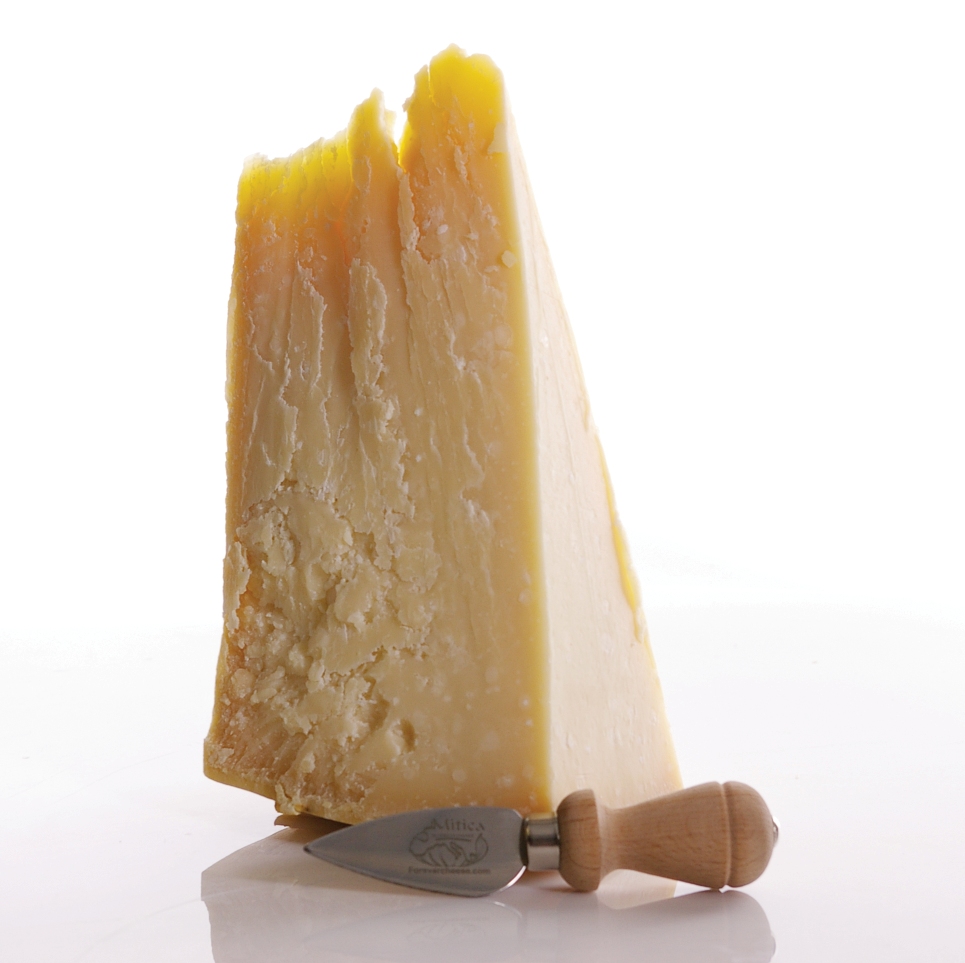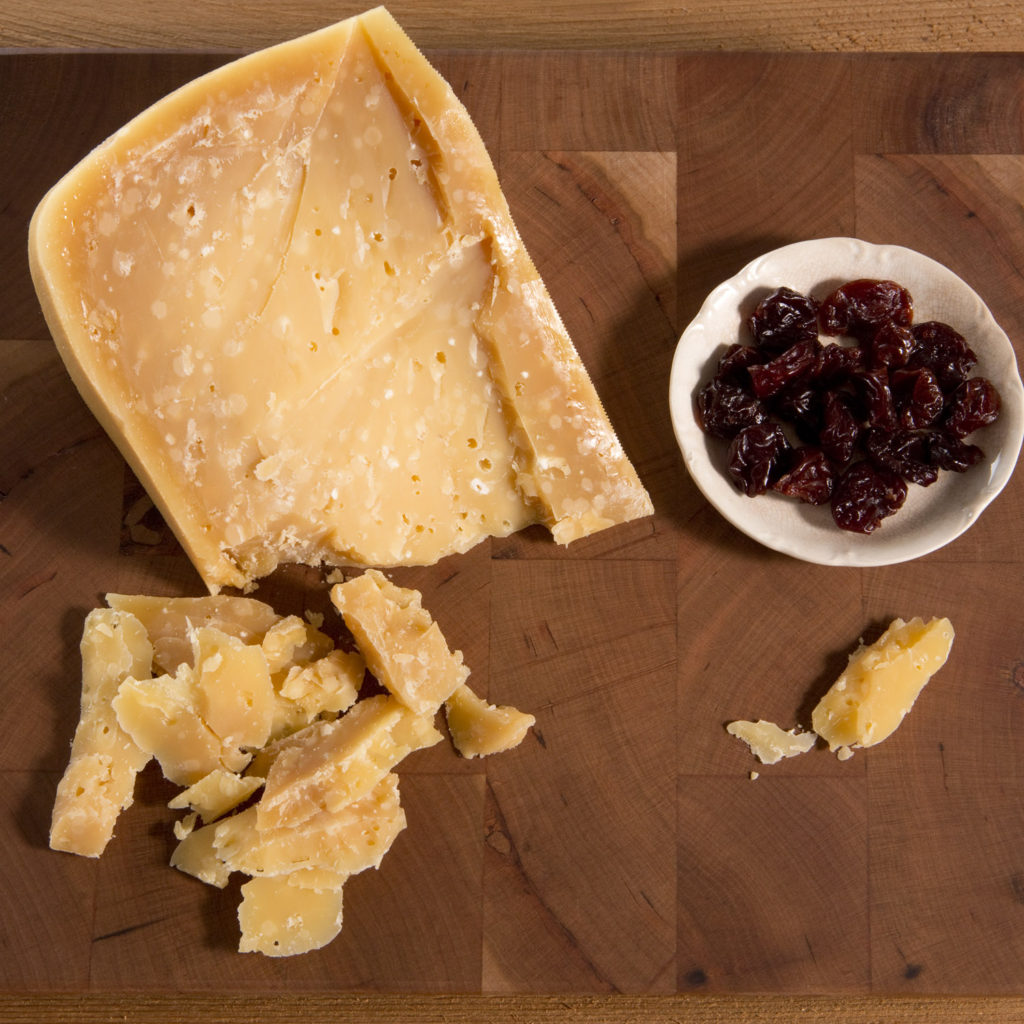Have you ever seen a piece of Parm, waiting in your local cheese shop, like a sparkling diamond? Wait, is it actually sparkling? You’re probably wondering what those little crystals, sprinkled over the paste of your cheese are. Or maybe you’ve bitten into a super aged cheddar, only to have a bit of crispy crunch break in. Maybe you love that little crunch – asking your monger for the “crunchies” whenever you visit the shop. Those little cheese diamonds, they’re a cheese lover’s best friend. They’re also known as tyrosine crystals. But how do they get there? Are they a flaw in the cheese or a sign of cheese mastery? We’ll lay it out for you.

The word tyrosine comes from the Greek word ‘tyros’, which, of course, means cheese. These crunchy clusters only appear on well-aged cheeses – that’s because they form over time, as cheese ages and the proteins start breaking down. If you want the more scientific answer, stay with us for a sec:
Cheese is made up of fats and proteins that are trapped in a matrix of proteins (think of it as a big spider web of protein molecules). As cheese ages, the chains of proteins break down, creating these small, crunchy amino acid clusters that are left behind. This shouldn’t be confused with the salty crunch left on the outside of washed rind cheeses – that’s residual salt left over from a brine wash. These tyrosine crystals stay on the paste, adding a delightful crunch to cheeses with a normally smooth paste.
Now, we’re talking about these little gemstones like they’re good things. But are they something cheesemakers are going for or are they a mistake in the process? Well, it depends on who you ask. For a long time, especially in the United States, these little crystals were seen as a defect – because of the appearance of tyrosine crystals, big cheese factories worried that the cheese would look moldy and get tossed in the trash. But nowadays, more people are seeing these cheese diamonds as the sign of a well-aged, delicious cheese that is full-flavored and complex. Our mongers hardly go a day without having someone ask for “crunchy cheese”.
From a delightful aged Gouda like Roomano, to the King of Cheese, Parmigiano Reggiano, you’ll find crunchy crystallization of all kinds. Since Valentine’s Day is on the way, let’s forgo the diamonds and sub them out for cheese diamonds. Your cheeseloving lovers will go crazy for them.


